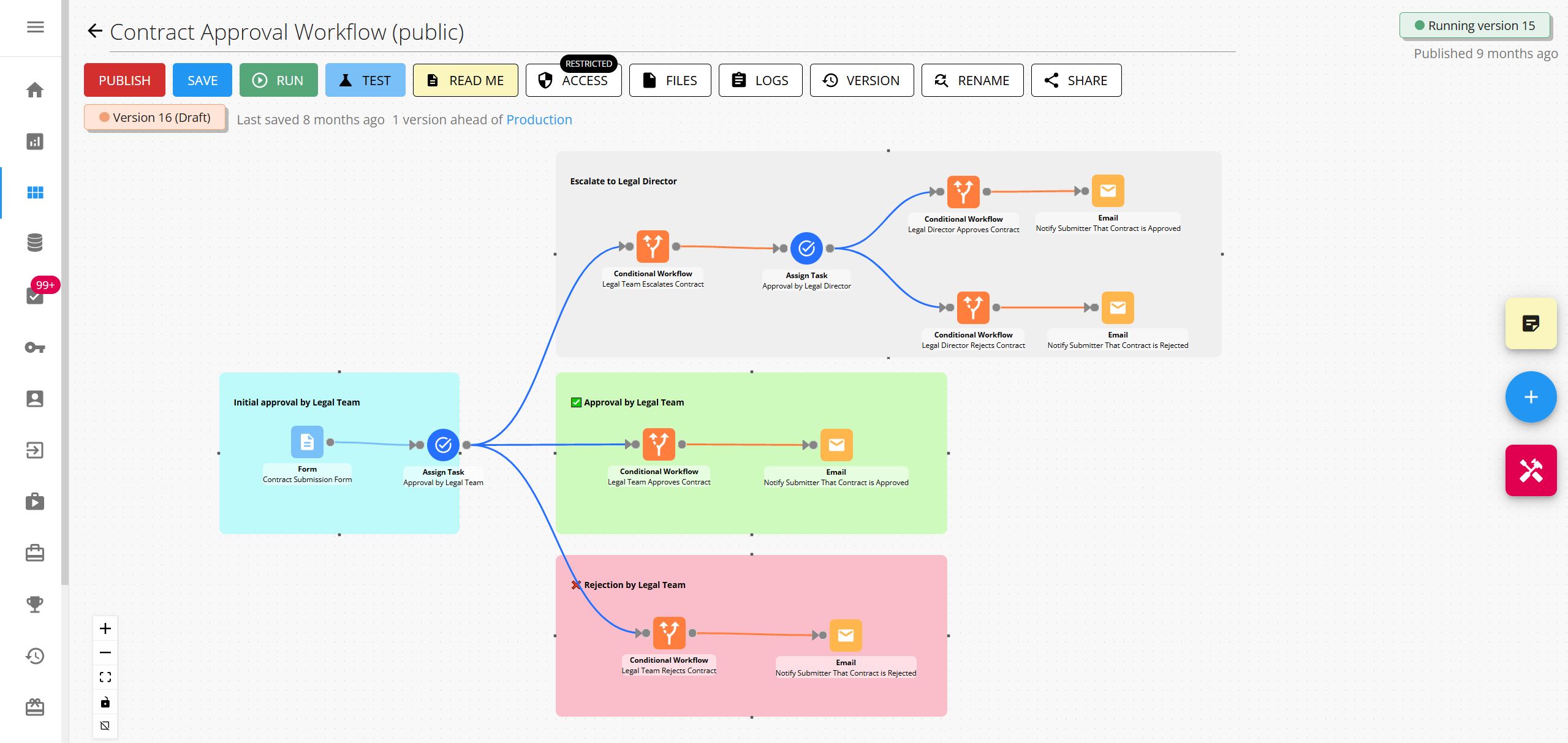Contract approval workflow
A step by step guide to managing the review and approval of contracts, and building a process that increases transparency and detection of potential risks.

What is contract approval?
Contract approval is the process of reviewing and approving a contract before it is executed or signed. This typically involves multiple stakeholders, such as legal and procurement teams, who review the contract to ensure that it is legally sound and aligns with the organization’s policies and goals.
The goal of contract approval is to protect the interests of the organization by ensuring that contracts are carefully reviewed and negotiated before they are signed. By involving multiple stakeholders in the contract approval process, companies can help ensure that contracts are thorough and comprehensive, and that they are in the best interests of the organization.
5 risks to consider in your contract approval process
There are a number of risks to look for when approving contracts, including legal, financial, reputational, compliance, and operational risks. By carefully reviewing contracts and involving multiple stakeholders in the approval process, companies can help mitigate these risks and protect the interests of the organization.
1. Legal risks:
It goes without saying that legal contracts come with legal risks. Contracts often involve complex legal language and obligations, and it is important to carefully review them to ensure that they are legally sound and do not expose the organization to unnecessary risks or liabilities.
2. Financial risks:
Contracts may involve significant financial commitments, such as large payments or long-term contracts, and it is important to carefully review them to ensure that they are financially viable and align with the organization’s budget and goals.
3. Reputational risks:
Contracts may involve sensitive information or relationships, and it is important to carefully review them to ensure that they do not damage the organization’s reputation or relationships with customers, partners, or other stakeholders.
4. Compliance risks:
Contracts may involve regulatory or compliance obligations, and it is important to carefully review them to ensure that they are in compliance with relevant laws, regulations, and policies.
5. Operational risks:
Contracts may impact the organization’s operations, and it is important to carefully review them to ensure that they do not disrupt business processes or hinder the organization’s ability to achieve its goals.
A step-by-step workflow for contract approval
This process provides a structured and systematic approach to reviewing and approving contracts. By involving multiple stakeholders and carefully reviewing and negotiating contracts, it can help ensure that contracts are thorough and comprehensive, and that they align with the organization’s policies and goals. By managing contracts carefully after they are signed, it can help ensure that the organization meets its obligations and protects its interests.
1. Identify the contract and stakeholders:
When a contract is received, it should be reviewed to determine which stakeholders, such as legal and procurement teams, should be involved in the approval process.
2. Review the contract and identify risks:
The contract should be carefully reviewed to identify any potential risks, such as legal, financial, reputational, compliance, or operational risks. Any identified risks should be documented and discussed with the relevant stakeholders.
3. Negotiate and revise the contract:
If necessary, the contract should be negotiated and revised to address any identified risks and align with the organization’s policies and goals. This may involve discussions with the other party to the contract and consultation with legal or other experts.
4. Obtain approvals and sign the contract:
Once the contract has been reviewed, negotiated, and revised as necessary, it should be submitted for approval to the relevant stakeholders, such as legal and procurement teams. Once all necessary approvals have been obtained, the contract should be signed and executed.
5. File and manage the contract:
After the contract is signed, it should be filed and managed according to the organization’s policies and procedures, such as by storing it in a secure location and tracking key dates and obligations.
⚡ Download our pre-built Contract Approval Workflow
Explore and download our Contract Approval Workflow template to instantly get a documented, step-by-step workflow for reviewing and approving contracts. Once downloaded, you can start running the workflow as is or customizing it to your own requirements (and we can help you build along the way).
More workflows and processes you can automate with Workflow86...
Workflow86 gives internal teams the superpowers they need to document and then massively automate and scale their workflows and processes. From Cybersecurity to Human Resources, Legal to Finance, Health and Safety to Customer Support, check out some of the use cases and downloadable templates for Workflow86 below.
💼 Administration
🦠 COVID-19
📞 Customer Support
🚨 Cybersecurity
👩💻 DevOps
💰 Finance
👨 Human Resources
💻 Information Technology
👩⚖️ Legal
📣 Marketing
🔨 Product Management
🛒 Sales
🚧 Safety and Risk

